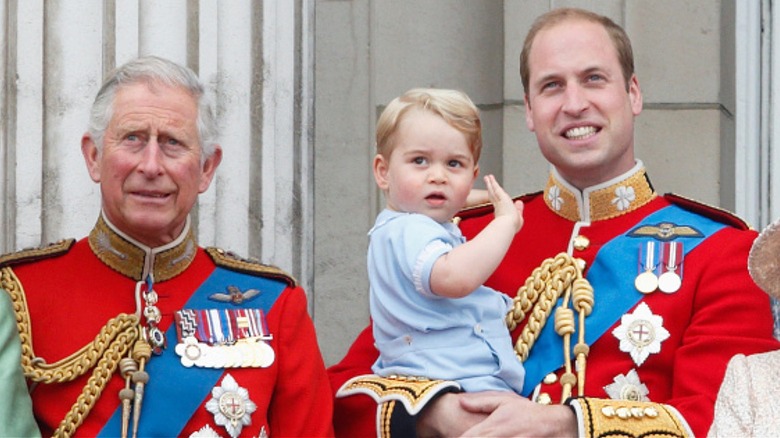The Succession To The Crown Act Changed The Royal Line Of Succession In A Big Way
Despite its place at the forefront of the modern zeitgeist, the British royal family has, up until recently, been operating under laws that were established centuries ago. Since the passing of the Bill of Rights in 1689 and the Act of Settlement in 1701, the successor of the sovereign has been largely based on sex, familial proximity, and religion. But a significant legal change in 2015 effectively shook up years of tradition, catapulting the crown into the 21st century.
The historic change proves that not even a centuries-old institution like the British monarchy is immune to society's changing tides. And while these new laws have yet to affect a monarch's succession to the throne (the most recent being King Charles III), they will undoubtedly alter the trajectory of the royal line in the years to come.
Here's what you need to know about the Succession of the Crown Act — and which members of the royal family will be the most likely to feel its effects first.
The Bill of Rights and Act of Settlement
Prior to the recent amendments to British law, the monarchy operated under provisions laid out in the Bill of Rights and the Act of Settlement. Both documents came on the heels of the deposition of James II of England in 1688, which disrupted the familial succession tradition the monarchy had followed since its founding.
The Bill of Rights gave regulatory power to Parliament, declaring that a sovereign could only rule with approval from England's governing political body. Parliament then outlined qualifications and guidelines for succession to the throne in the Act of Settlement.
Under these laws, only Protestant descendants in communion with the Church of England and Scotland could be considered for the throne. Roman Catholics, or those married to a Roman Catholic, were excluded from consideration. These laws also continued the centuries-old practice of male primogeniture, which allowed a younger son to bypass an elder daughter in line for the throne.
The Succession to the Crown Act
The Succession of the Crown Act, placed into law in 2015, ended centuries of male bias and religious discrimination in regard to marriage. The act removed provisions that prevented those who married outside the Church of England and Scotland from ascending to the throne. It also replaced the system of male primogeniture with absolute primogeniture.
Under absolute primogeniture, the eldest descendant of the monarch is considered next in line for the throne, regardless of gender. However, this only applies to descendants born after October 28, 2011. Princess Anne, for example, is still preceded in line of succession by her younger brothers, Prince Andrew and Prince Edward, because all three siblings were born before 2011.
But this does change things for Prince George, Princess Charlotte, and Prince Louis, the children of William and Catherine Middleton, Prince and Princess of Wales. Under previous laws, Charlotte would have been bypassed by her younger brother, Louis, in line for the throne. With these new, more inclusive laws set in place, her place as third in line to the throne will stand firm (until George has kids of his own). While this might not seem like a huge change, in the face of a centuries-old institution and tradition, it's quite the modern shake-up.


